FONTAINEBLEAU
15 GLOVER ROAD MOUNT MACEDON, MACEDON RANGES SHIRE
-
Add to tour
You must log in to do that.
-
Share
-
Shortlist place
You must log in to do that.
- Download report
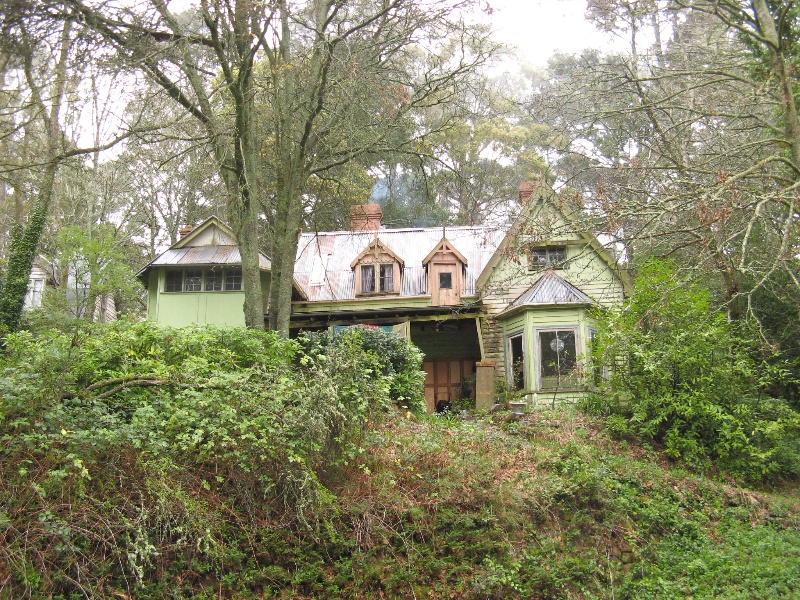

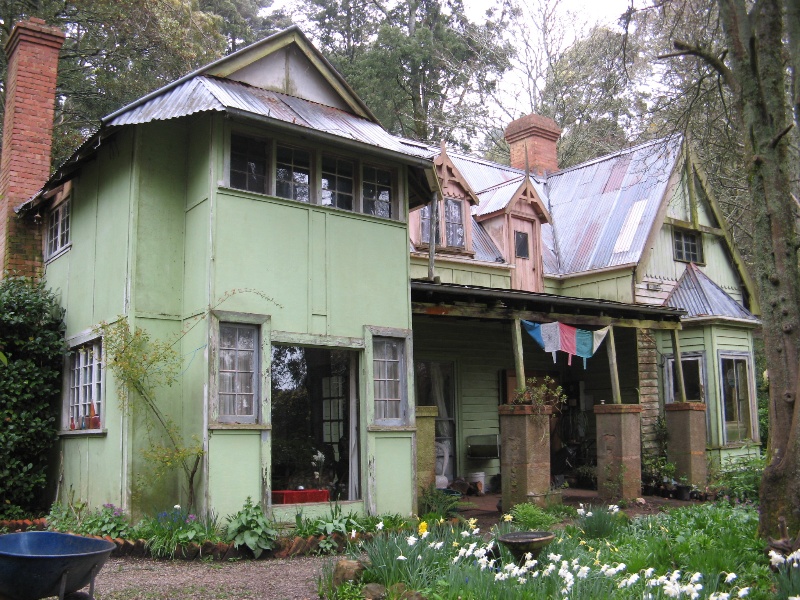
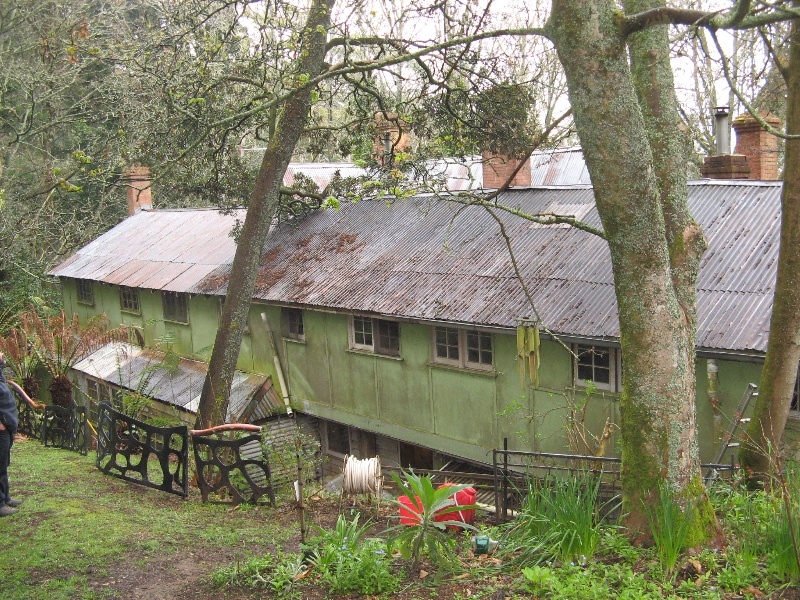
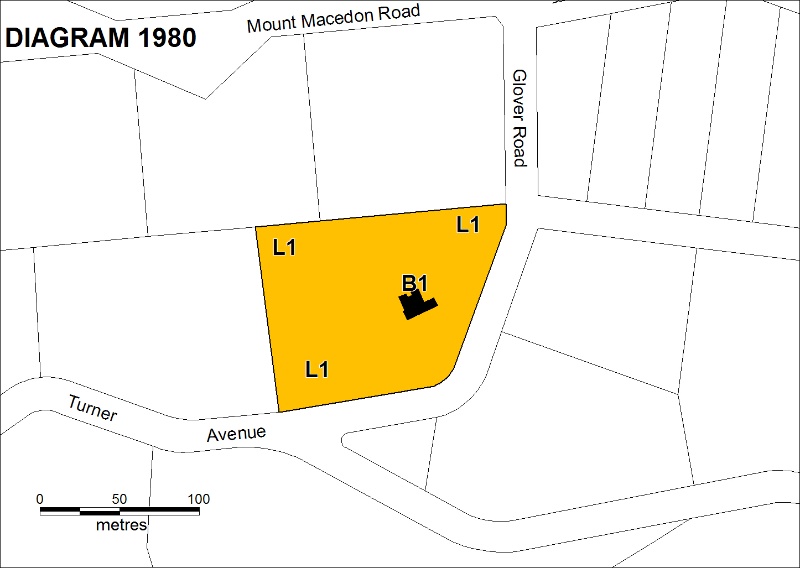
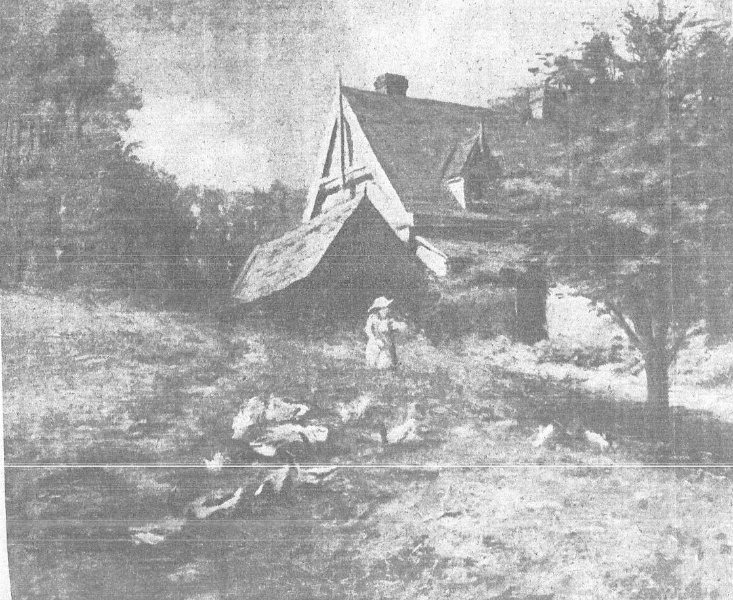
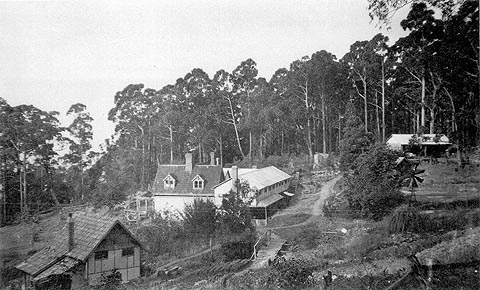

Statement of Significance
What is significant?
Fontainebleau was originally built in the late nineteenth century, probably in Melbourne, and was moved to Mount Macedon and purchased in 1901 as a home for his family by the artist Frederick McCubbin (1855-1917). He named it after the forests near Paris where the Barbizon painters had worked. The McCubbin family lived there for five years, with McCubbin continuing to work in Melbourne but spending weekends and holidays at Fontainebleau, even after the family's move back to Melbourne in 1907. McCubbin was one of Australia's most admired artists of the late nineteenth and early twentieth centuries. He was one of the founders of the Heidelberg school and was a major figure in the development of the Australian school of landscape and subject painting that emerged at the close of the nineteenth century. The garden and bush around Fontainebleau became one of McCubbin's main painting grounds, and was to provide him with the inspiration for some of his most memorable and best-loved works, including the iconic painting The Pioneer (1904), which was painted in the bush near the house. Two years after McCubbin's death the family moved back to Fontainebleau. His widow Annie planned to run it as a guest house, and in c1920 added two new accommodation wings. Although the venture was not successful it continued to be run as a guest house after Annie's death c1930 until the 1960s. It is now a private residence.
Fontainebleau is a rambling asymmetrical two-storey timber and fibro building with a corrugated iron clad roof. The oldest part of the building is a weatherboard Gothic style house with a steeply-pitched gable roof and dormer windows, originally with three main rooms, the front one with a bay window, and a kitchen on the ground floor and three bedrooms upstairs. At the front, facing Hanging Rock, is a recessed verandah. As part of the c1920 conversion to a guest house, two two-storey fibro-clad gabled wings were added, one along the east side of the house and one along the rear. The side wing has a large lounge room with an open fireplace on the ground floor and bedrooms and a bathroom above. The rear wing has a kitchen, a laundry and the former dining room on the ground floor and bedrooms and bathrooms on the first floor. The house is set on a large steeply sloping block of land amidst gardens and bushland on the north side of Mt Macedon. Below the house is a level terrace, once used for games. This site is part of the traditional land of the Wurundjeri people.
How is it significant?
Fontainebleau is of historical and architectural significance to the state of Victoria.
Why is it significant?
Fontainebleau is of historical significance as the former home of Frederick McCubbin, a founder of the Heidelberg School, the first major local movement in the history of Australian art, and one of Australia's best-loved artists. He was an important figure in the development of art in Australia, and his depictions of the Australian bush are among Australia's most well-known and popular paintings. McCubbin was deeply attached to the bush close to Fontainebleau, which was a continuing inspiration for him. The works painted in the area during the last seventeen years of his life are considered to be amongst his most important.
Fontainebleau is historically significant for its association with the development of the tourist industry in Victoria in the early twentieth century, which occurred then mainly due to the development of an effective and relatively cheap transport network and increasing levels of affluence and of leisure time. The 1920s was the heyday of the guest house, the main form of accommodation in the popular seaside and mountains resorts at the time.
Fontainebleau is of architectural significance as a rare and essentially intact example of a typical guest house of the 1920s. Guest houses at this time were often built from inexpensive materials such as timber, cement sheet and corrugated iron and were typically extended in a haphazard way around a former private residence.
-
-
FONTAINEBLEAU - History
CONTEXTUAL HISTORY
The artist: Frederick McCubbin (1855-1917)
[adapted from ADB entry by Andrew McKenzie]
Frederick McCubbin was born on 25 February 1855 at 165 King Street, Melbourne, son of a baker from Scotland and his English wife Anne. Educated at William Willmott's West Melbourne Common school and St Paul's School, Swanston Street, at about fourteen he was placed in a solicitor's office. He soon joined the family business and drove a baker's cart before being apprenticed to a coach-painter.
In 1869 he enrolled at the Artisans' School of Design, Carlton, and later studied drawing under Thomas Clark at the school of design, National Gallery of Victoria. His studies at the gallery were curtailed by the death of his father and the need to assist with the family business. McCubbin continued in the school of design under O. R. Campbell, and joined the school of painting as well under Eugen von Guerard in 1877. Tom Roberts and Mackennal were fellow students. He also studied and exhibited at the Victorian Academy of Art, showing in their annual exhibitions of 1876 and 1879-82, selling his first painting, 'View Near Fisherman's Bend', from the 1880 exhibition. In 1882 he was awarded a silver medal for figure drawing in the academy life-class and was elected an associate.
When Roberts returned from overseas in 1885, he and McCubbin went on painting trips, camping at Housten's farm at Box Hill, at Mentone on Port Phillip Bay and later in the Heidelberg area. Here they were joined by Arthur Streeton, Charles Conder and others, these first camps marking the beginning of what came to be called the Heidelberg school. Nicknamed 'The Proff' because of his philosophizing, McCubbin was a strong advocate of the particularly national element in the work of the school, drawing his inspiration both from the earlier traditions of colonial art and the growing sense of nationalism of the time. In 1886 he was appointed drawing master of the school of design and held this position for the rest of his life.
In 1889 he had joined Roberts, Streeton, Conder, C. Douglas Richardson, R. E. Falls and Herbert Daly in the exhibition of 9 x 5 impressions at Buxton's Galleries. He occasionally participated in the Society of Artists' exhibitions of the late 1890s in Sydney, was represented in the 1898 Exhibition of Australian Art, Grafton Galleries, London, and held one-man shows in Melbourne from about 1904. He had married Annie Lucy Moriarty at St Ignatius Church, Richmond, on 5 March 1889. In the following years they lived in the Melbourne suburbs of Auburn, Blackburn, Brighton and Carlton, then for several years in the cottage named Fontainebleau at Macedon, and finally at Carlsburg, South Yarra. On the death of Folingsby in 1891 McCubbin was acting director of the National Gallery until the appointment of Bernard Hall in 1892, and was so again in 1903 and 1905. In 1907 was given leave from the gallery to visit England and Europe, staying with his old friend Roberts and visiting numerous galleries and art schools. He died of heart disease on 20 December 1917 at South Yarra, and was buried in Brighton cemetery. His wife, four sons including Louis and two daughters survived him.
McCubbin's first work to be acquired for a public gallery was 'Feeding Time', purchased by the National Gallery of Victoria in 1894 and exchanged for 'A Winter Evening' in 1900; 'The Pioneers' was also acquired in 1906. The Western Australian and New South Wales galleries made purchases in 1896 and 1897; 'A Bush Burial' was bought by public subscription for the Geelong Art Gallery in 1900; and the Art Gallery of South Australia purchased paintings in 1900 and 1912.
McCubbin, as one of the founders of the Heidelberg school, was a major figure in the development of the Australian school of landscape and subject painting that emerged at the close of the nineteenth century. His early interest in the portrayal of national life was illustrated in his large subject pictures of recent history, extolling the virtues and quiet heroism of the pioneers. His work was directly influenced by the earlier traditions of Australian colonial art, late-Victorian subject pictures of a high moral tone, Folingsby's interests in heroic history pieces, and the young colony's emerging sense of national identity. Other influences included Louis Buvelot, Roberts and plein air realism, combined with the example of Bastien-Lepage and his humble peasants. In later years McCubbin turned increasingly to landscape painting, portraying the lyrical and intimate beauty of the bush. The early influence of Corot gave way to that of J. M. W. Turner, as he turned from the quiet poetry of the shaded bush to the brilliant impressionistic effects of light and colour of his final manner. He was also a portrait painter.
GUEST HOUSES IN VICTORIA
[information taken from Gabrielle Moylan & Philippa Watt, 'Holiday Guest Houses. A Statewide Typological Survey', 1994]
Tourism was born and grew to maturity in Victoria in the late nineteenth and the first half of the twentieth centuries. This was due to the development of an effective and relatively cheap transport network, increasing levels of affluence and of leisure time, and changes in the ideal of leisure. Tourists resorts sprang up in the mountains, on the coast, beside lakes or rivers and near mineral springs. Guest houses were the main form of accommodation in these resorts. They offered recreational facilities, such as croquet, tennis and billiards, and comforts such as hot and cold baths, sitting and reading and smoking rooms, a wide verandah. Guests could stroll through the gardens or tour the scenic attractions of the area. The heyday of the guest houses was in the 1920s, and some towns, such as Healesville (83), Swan Hill (37), Glenlyon (including Hepburn Springs (25), Flinders (24) and Daylesford (38), had dozens of guest houses. The 1930s depression hit the industry hard, and many guest houses closed. In 1940 the RACV imposed stricter controls on the establishments they listed, and many more closed down.
Some guest houses of the late nineteenth century were grand buildings, catering to an affluent clientele, often nostalgically recreating fashionable European styles, for example Braemar House near Woodend. Guest houses of the twentieth century became more utilitarian structures, often built from inexpensive materials such as timber, cement sheet and corrugated iron. They were typically developed and extended in a haphazard way. Many complexes were made up of a matrix of linear wings, or a series of attached or detached structures emanating from a former private residence. The verandah was always a characteristic element.
HISTORY OF PLACE
[Largely from Artist's footsteps website: author Andrew McKenzie, 'The Artists: Frederick McCubbin, The Macedon Years', http://www.artistsfootsteps.com/html/mccubbin_macedonyears.htm]
In 1900 McCubbin's wife Annie contracted bronchitis and then pneumonia, and was advised to take a holiday in the mountain air of Mt Macedon. In the Christmas holiday break the family rented a cottage at Woodend, and McCubbin discovered the house, then known as 'Dillon's Summer Residence'. McCubbin's daughter Kathleen recalled her parents telling her that the old-fashioned English cottage with a red gabled roof and attic windows had been brought from Melbourne by bullock wagon. It was purchased for £500 in Annie McCubbin's name, the Transfer of Land document being dated 24 September 1901. McCubbin named it after the forests of Fontainebleau near Paris where the Barbizon painters worked.
Fontainebleau was too far from Melbourne for McCubbin to travel to his work at the National Gallery of Victoria, so when the family moved from Carlton McCubbin lived during the week with his sisters and mother at the hotel the sisters managed, The Rose of Australia on the corner of Bourke and King Streets, and he spent the weekends and vacations at Fontainebleau.
Fontainebleau was the first and only home that the family ever owned, and the surrounding bushland was to provide McCubbin with the inspiration for some of his most memorable and best-loved works. The garden and surrounding bushland became one of McCubbin's main painting grounds, and amongst other works he produced here one of Australia's iconic paintings 'The Pioneer, 1904, painted in the bush a little above the house. The house and his daughter Kathleen feeding the ducks were depicted in the painting 'The Mountain Cottage (1915). The adjoining property, Ard Choille (PROV 2075), developed by William Macgregor, previous Chairman of BHP, into one of Mt Macedon's finest hill station properties, provided further subject matter for his paintings.
McCubbin's daughter Kathleen Mangan recalled her father:
Going into the bush with his battered old felt hat and his painting coat which was smeared with paint and he carried his easel and paint box. He used to go and find a secluded spot and put down his camping stool and he would paint his subjects right there in the bush on the spot. His easel was collapsible and folded into three and was usually strapped to his paint box. When he opened up his paint box, he had his palette on one side and all his paints and oils and mixers on the other side, along with his brushes and of course his palette knife. He didn't need to wander far because there were so many paintable subjects right there close to the cottage. He would always be within calling distance and would return very punctually for lunch, because my mother put on very good lunches.
In Daisy Chains, War then Jazz (Mangan, 1984, p 82) Kathleen notes 'the big centre hall that father had always used as his studio at Fontainebleau.
The Pioneer was the centrepiece of a one-man exhibition at the Athenaeum in April 1904, in which he included a number of recently completed Macedon landscapes. The press commented on these works:
A poet in colour is the only description that quite expressed the dominant traits of Mr McCubbin's art. If he had been fortunate enough to enjoy a residence in Europe, he would without any doubt have become a disciple of Corot. AS it is Mr McCubbin has attempted to do for Macedon and Woodend something of what the Frenchman did for the forests of Fontainebleau and the woods of Ville d'Avray.
The Pioneer was acquired in 1906 by the National Gallery of Victoria through the Felton Bequest for £175 (considerably less than the artist's original asking price of £525). The Age reviewer hailed it as 'by far the most significant picture yet produced in the history of Australian Art'. McCubbin wrote that 'The big picture is to my mind my best effort in Art and so a number of my friends feel'.
In 1905 McCubbin rented a city house in South Yarra for his family, so that he could concentrate more on commissioned portraits. In 1907 he visited England and France, giving him the opportunity to see the English painter J M W Turner's works in the Tate Gallery. On his return the family moved to another house in South Yarra next to Como on the Yarra River. McCubbin however retained Fontainebleau and although he continued to work full-time during the week as the Drawing Master at the National Gallery of Victoria, he made regular visits to Fontainebleau, where he painted at leisure, inspired by the surrounding bush. McCubbin spent the last sixteen years of his life visiting Fontainebleau at every opportunity, and as time went by his canvases showed increasing influence of the works of Turner. His students often visited him during the summer vacations, pitching their tents in the bush close to his house.
Paintings done at Fontainebleu include: The Pioneers, Lost Child, Upland Farm, Midsummer's Eve, Childhood Fancies, What the Little Girl Saw in the Bush, Cotton Bush, Motherhood, Wattle Grove, Sawing Timber, Wood Sawyers, Hauling Timber, Wattle Glade, Wattle and Sunlight, A Gleam of Light, Fern Cutters, The Old Blackwood Trees, The Effect of Light Through the Blackwoods, A Frosty Morning, A Country Road, A Bush Hut, The Rabbit Burrow, Hauling Timber (Macedon Heights), Our Mountain Cottage, Evening in the Bush, Shelling Peas, Clearing Timber, Bullock Wagon, Shimmering Light, At Macedon and Violet and Gold.
According to Moylan & Watts ('Holiday Guest Houses. A Statewide typological survey', p 824) after McCubbin's death in 1917 the house
remained unoccupied for two years until his widow Annie and their children moved in permanently. In c1920 Annie and a friend, Madame Goode, decided to enter into a business agreement which would see Fontainebleau transformed into both a guest house and a commercial laundry. It was thought, according to Kathleen Mangan (nee McCubbin) that the success of both was assured since it would be the only guest house on that side of the mountain as Braemar House had ceased operations as a guest house and had become a school, Clyde [a boarding school for the daughters of the wealthy]. This meant, they believed, that there existed no direct competition and rather a sizeable client, who would require the services of the laundry on a large scale.
The association with Frederick McCubbin reportedly attracted clientele to the house. McCubbin's daughter Kathleen Mangan (Daisy Chains, War then Jazz, 1984, p 170) recalled
During our last Christmas at Fontainebleau the house was filled with guests of a different kind from those of earlier years. The days when mother catered for parent with school children and daughters at Clyde had passed. Now the place was filled with fashionable young couples and various unattached young men and women who preferred to dress for dinner and take wine with their meals. The jazz age was in full swing and, after dinner, there would be dancing in the big lounge room to the music of gramophone records. Everyone was dance crazy and that Christmas was the gayest season I ever remember at Fontainebleau.
Hanging Rock could be seen from Fontainebleau, and according to Kathleen Mangan, McCubbin's daughter, the view inspired Joan Lindsay, a former student of McCubbin's at the National Gallery School and a visitor to Fontainebleau (who is seen in a c1924 photo taken at Fontainebleau in Kathleen Mangan's Daisy Chains, War then Jazz, p 165) to write her novel Picnic at Hanging Rock. The nearby Clyde School was the inspiration for the school in the novel.
Ultimately clear success was never gained by either the guest house or the laundry. Though a building was constructed to house the laundry (now demolished), operations never got underway. Substantial additions were made to the house to make it operational as a guest house, most notably an entire new wing along the rear of the house. The house then had twenty-four rooms. The guest house never ran as a success and, in 1924, it was decided to sell it. An auction notice in The Argus (21 April 1924, p 2) advertised Fontainebleau as
A very fine property at Woodend, Fontainebleau (known as Mrs McCubbin's property), having an area of 3 acres 3 roods 9 perches.
This magnificent mountain home situated on the northern slopes of Mount Macedon is ideally situated for a gentleman's residence, a superior school or college, or a high-class guest house.
The house is constructed of timber and fibro cement. On the ground floor there are large lounge with two open fireplaces, dining room 22x12, three other good rooms, kitchen scullery and all conveniences. Upstairs there are 14 rooms [this was changed to 11 rooms in the same advertisement on 26 April] of varying sizes, 3 bathrooms and two lavatories.
Good hot water service, lighting and sewerage.
There are verandahs back and front and from the balcony there are extensive views of most beautiful landscapes, many of which views were painted by Mr McCubbin, and rank among his best-known pictures, including that of 'The Pioneers' now in the Melbourne Picture Gallery.
It appears that the house didn't sell at that time. Though Annie had died by c1930, the building was still rated as owned by her estate in the 1930s. It was run by a Mrs M D Abblitt as a guest house until the 1950s-1960s. It is now a private residence.
FONTAINEBLEAU - Assessment Against Criteria
a. Importance to the course, or pattern, of Victoria's cultural history
Fontainebleau is the former home of Frederick McCubbin, a founder of the Heidelberg School, the first major local movement in the history of art in Australia. He was a major figure in the development of art in Australia, and his depictions of the Australian bush are among Australia's most popular paintings.
b. Possession of uncommon, rare or endangered aspects of Victoria's cultural history.
Fontainebleau is a now rare example of a typical guest house of the 1920s, the heyday of the guest house in Victoria. Tourism increased in Victoria in the early twentieth century due to the development of an effective and relatively cheap transport network and increasing levels of affluence and of leisure time. Guest houses were the main form of accommodation in the popular seaside and mountains resorts.
c. Potential to yield information that will contribute to an understanding of Victoria's cultural history.
d. Importance in demonstrating the principal characteristics of a class of cultural places or environments.
Fontainebleau is of architectural significance as an essentially intact example of a typical guest house of the 1920s. Guest houses at this time were often built from inexpensive materials such as timber, cement sheet and corrugated iron and were typically extended in a haphazard way around a former private residence.
e. Importance in exhibiting particular aesthetic characteristics.
f. Importance in demonstrating a high degree of creative or technical achievement at a particular period.
g. Strong or special association with a particular community or cultural group for social, cultural or spiritual reasons. This includes the significance of a place to Indigenous peoples as part of their continuing and developing cultural traditions.
h. Special association with the life or works of a person, or group of persons, of importance in Victoria's history.
Fontainebleau was the home of Frederick McCubin, one of Australia's best-loved artists. McCubbin was deeply attached to the bush close to Fontainebleau, which was a continuing inspiration for him. The works painted in the area, where he painted throughout the last seventeen years of his life, are considered to be amongst his most important.
FONTAINEBLEAU - Plaque Citation
The artist Frederick McCubbin owned this house from 1901 till his death in 1917 and painted many of his most famous works here, including The Pioneer (1904). After his death the house was extended and converted into a guest house.
FONTAINEBLEAU - Permit Exemptions
General Exemptions:General exemptions apply to all places and objects included in the Victorian Heritage Register (VHR). General exemptions have been designed to allow everyday activities, maintenance and changes to your property, which don’t harm its cultural heritage significance, to proceed without the need to obtain approvals under the Heritage Act 2017.Places of worship: In some circumstances, you can alter a place of worship to accommodate religious practices without a permit, but you must notify the Executive Director of Heritage Victoria before you start the works or activities at least 20 business days before the works or activities are to commence.Subdivision/consolidation: Permit exemptions exist for some subdivisions and consolidations. If the subdivision or consolidation is in accordance with a planning permit granted under Part 4 of the Planning and Environment Act 1987 and the application for the planning permit was referred to the Executive Director of Heritage Victoria as a determining referral authority, a permit is not required.Specific exemptions may also apply to your registered place or object. If applicable, these are listed below. Specific exemptions are tailored to the conservation and management needs of an individual registered place or object and set out works and activities that are exempt from the requirements of a permit. Specific exemptions prevail if they conflict with general exemptions. Find out more about heritage permit exemptions here.Specific Exemptions:General Conditions: 1. All exempted alterations are to be planned and carried out in a manner which prevents damage to the fabric of the registered place or object. General Conditions: 2. Should it become apparent during further inspection or the carrying out of works that original or previously hidden or inaccessible details of the place or object are revealed which relate to the significance of the place or object, then the exemption covering such works shall cease and Heritage Victoria shall be notified as soon as possible. General Conditions: 3. If there is a conservation policy and plan endorsed by the Executive Director, all works shall be in accordance with it. Note: The existence of a Conservation Management Plan or a Heritage Action Plan endorsed by the Executive Director, Heritage Victoria provides guidance for the management of the heritage values associated with the site. It may not be necessary to obtain a heritage permit for certain works specified in the management plan. General Conditions: 4. Nothing in this determination prevents the Executive Director from amending or rescinding all or any of the permit exemptions. General Conditions: 5. Nothing in this determination exempts owners or their agents from the responsibility to seek relevant planning or building permits from the responsible authorities where applicable. Minor Works : Note: Any Minor Works that in the opinion of the Executive Director will not adversely affect the heritage significance of the place may be exempt from the permit requirements of the Heritage Act. A person proposing to undertake minor works may submit a proposal to the Executive Director. If the Executive Director is satisfied that the proposed works will not adversely affect the heritage values of the site, the applicant may be exempted from the requirement to obtain a heritage permit. If an applicant is uncertain whether a heritage permit is required, it is recommended that the permits co-ordinator be contacted.FONTAINEBLEAU - Permit Exemption Policy
The purpose of the Permit Policy is to assist when considering or making decisions regarding works to the place. It is recommended that any proposed works be discussed with an officer of Heritage Victoria prior to them being undertaken or a permit is applied for. Discussing any proposed works will assist in answering any questions the owner may have and aid any decisions regarding works to the place. It is recommended that a Conservation Management Plan is undertaken to assist with the future management of the cultural significance of the place.
The extent of registration protects the whole site. All of the registered building is integral to the significance of the place and any external or internal alterations that impact on its significance are subject to permit application. The addition of new buildings to the site may impact upon the cultural heritage significance of the place and requires a permit. The purpose of this requirement is not to prevent any further development on this site, but to enable control of possible adverse impacts on heritage significance during that process.
The significance of the place lies in the association with the artist Frederick McCubbin, and also its rarity and intactness as a simple and essentially intact 1920s guest house. The present house comprises the original two-storey late nineteenth century Gothic style weatherboard house, marked by the steeply pitched gable roof with dormer windows, as it was when lived in by McCubbin and his family, and the long fibro-clad additions along the south and east sides added by his widow after his death for its new use as a guest house. Though largely intact externally, the condition of both the weatherboard house and the fibro guest house additions is poor. The verandah on the north side of the old house is not original, and could be replaced with a permit by one more in keeping with the original, as seen in various photos of the house, for example on p 123 of Bridget Whitelaw's Art of Frederick McCubbin. The two-storey timber addition at the east end of the rear guest house wing is a later addition of no significance and could be demolished.
-
-
-
-
-
FONTAINEBLEAU
 Victorian Heritage Register H1980
Victorian Heritage Register H1980 -
Fontainebleau
 National Trust H1980
National Trust H1980
-
"1890"
 Yarra City
Yarra City -
'BRAESIDE'
 Boroondara City
Boroondara City -
'ELAINE'
 Boroondara City
Boroondara City
-
-










